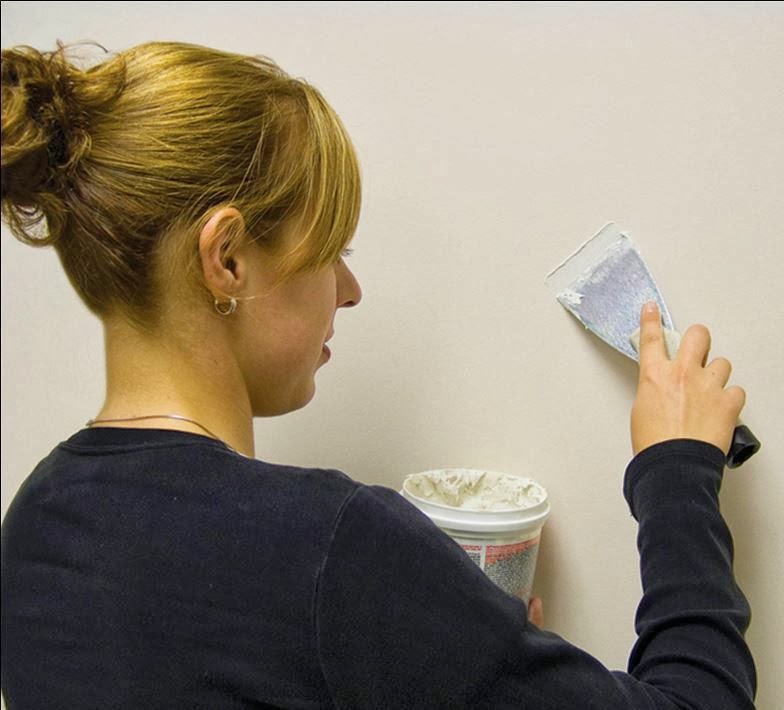Step 1: Remove Old Faucet and Drain Assembly
It's a good idea to replace the drain when you replace a faucet. If you do replace the drain, also consider replacing the P-trap and drain tailpiece at this time.In our project, we removed a bathroom faucet and replaced it with a new pop-up drain and faucet.
Step 2: Install the Faucet
Depending on the type of faucet you install, a 4" faucet with an escutcheon plate or an 8" faucet without an escutcheon, follow these specific instructions.Small faucet: Place plumber's tape or joint compound on the threads of the faucet stems. If the faucet includes a rubber gasket, install it on the base of the faucet before inserting the faucet stems in the appropriate holes in the sink. If your faucet doesn't include a gasket, run a line of caulk under the faucet before installing it so it squeezes out a bit as you put the faucet in place. Use a wet rag to wipe up excess caulk.
Secure the nuts under the faucet that hold it to the sink, making sure the plate and faucet stem is properly aligned. Tighten the nuts by hand first before giving them another quarter-turn with a wrench.
Connect the water supply lines to the faucet stems. Apply plumber's tape to the shutoff valve threads. Tighten the coupling nuts to the faucet supply stems, taking care not to over tighten.
Large faucet: Wrap plumber's tape around the threads of the hoses leading from the valves to the spout. Attach the hose to the end of the valve assembly.
Thread the valve through the appropriate hole and firmly tighten the nut underneath the sink. Caulk around the base of the spout and thread the connections through the center hole. Attach the hoses to the spout from underneath and tighten the connection with an adjustable wrench.
Attach the water supply lines. You may need to reduce the length of the lines after you attach the sink to the wall.
Dry-fit the sink and mark the mounting holes underneath the sink. Remove the sink and drill the mounting holes.
Connect the water supply lines to the shutoff valves.
Connect the drain assembly to the drain in the wall. You may want to use a flexible adapter. Tighten the connections with a wrench.
Step 3: Complete the Faucet and Fixture Installation
Slowly turn on the water to bleed off any air and check for leaks.In our project, we installed a pedestal underneath the sink. In the case of a pedestal sink, make the mounting holes in the floor and remove the pedestal. Drill the mounting holes and insert the anchors. Replace the pedestal and secure it with lag screws. Secure the back of the sink with lag screws.
Attach faucet knobs if necessary. If not already installed, attach the stopper assembly in the drain hole. Work the pop-up rod to make sure it works properly.
Caulk any gaps between the wall and sink, forcing the caulk as deeply as possible into the gaps. Use a caulk that matches the color of the sink as closely as possible. Use a wet rag to wipe away excess caulk.
Step 4: Install the Drain Assembly
Apply a thick bead of plumber's putty to the underside of the new drain flange and press it into the drain hole. Insert the drain housing through the drain hole from underneath the sink (Image 1).Screw the drain housing tightly to the drain flange, making sure there's a washer between the nut and the rubber gasket on the flange (Image 2).
Once the flange and body are joined, tighten the nut on the body until the gasket is tight against the underside of the sink.
Note: The fitting for the pop-up control arm should face the rear of the sink after you finish tightening.
Drop the pop-up drain into place, keeping the hole for the control pin toward the rear of the sink. Insert the plastic washer and ball socket for the drain pop-up and screw these into place.
Wrap plumber's tape (Teflon tape) around the drain tailpiece to tighten the connection and screw it into place.
Mount the faucet onto the sink. Remember to use care not to over-tighten any of the hardware around a breakable sink vessel or bowl.
Need help http://myorlandohandyman.com
